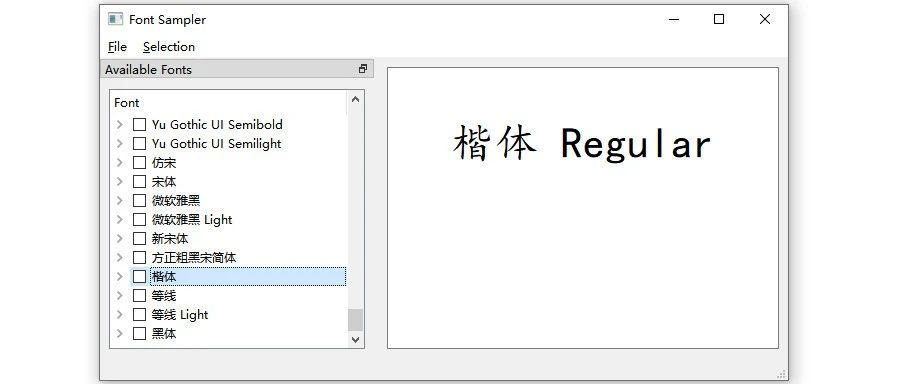不能用采样器显示纹理
不能用采样器显示纹理
提问于 2016-01-25 00:39:29
我试图显示一个加载了MTKTextureLoader的纹理,我有一个缓冲区来存储我的顶点坐标(我构建了两个三角形来在其中有一个矩形来显示我的图像),然后我有一个缓冲区来存储每个顶点的纹理坐标。
我做了一个取样器从我的纹理中采样数据,问题是我什么也没有得到(黑色图像)。
我提供了Swift代码,以防我的错误来自那里,但我认为它来自金属代码。如果您查看我的片段着色器,您将看到两个注释,它们显示了一些我无法理解的东西:
- 如果我将坐标直接交给样本函数,它就会工作(用与给定坐标对应的颜色来表示三角形)。
- 如果我把传递给采样器的坐标作为颜色分量,它也会显示一些相干的东西(三角形在给定坐标的函数中着色)。
所以它似乎不是来自采样器,也不是来自坐标,这是我不明白的。
这是我的Swift代码:
import Cocoa
import MetalKit
import Metal
class ViewController: NSViewController, MTKViewDelegate {
var device:MTLDevice!
var texture:MTLTexture!
var commandQueue:MTLCommandQueue!
var vertexBuffer:MTLBuffer!
var vertexCoordinates:[Float] = [
-1, 1, 0, 1,
-1, -1, 0, 1,
1, -1, 0, 1,
1,-1,0,1,
1,1,0,1,
-1,1,0,1,
]
var vertexUVBuffer:MTLBuffer!
var vertexUVCoordinates:[Float] = [
0,1,
0,0,
1,0,
1,0,
1,1,
0,1
]
var library:MTLLibrary!
var defaultPipelineState:MTLRenderPipelineState!
var samplerState:MTLSamplerState!
@IBOutlet var metalView: MTKView!
override func viewDidLoad() {
super.viewDidLoad()
device = MTLCreateSystemDefaultDevice()
let textureLoader = MTKTextureLoader(device: device)
metalView.device = device
metalView.delegate = self
metalView.preferredFramesPerSecond = 0
metalView.sampleCount = 4
texture = try! textureLoader.newTextureWithContentsOfURL(NSBundle.mainBundle().URLForResource("abeilles", withExtension: "jpg")!, options: [MTKTextureLoaderOptionAllocateMipmaps:NSNumber(bool: true)])
commandQueue = device.newCommandQueue()
library = device.newDefaultLibrary()
vertexBuffer = device.newBufferWithBytes(&vertexCoordinates, length: sizeof(Float)*vertexCoordinates.count, options: [])
vertexUVBuffer = device.newBufferWithBytes(&vertexUVCoordinates, length: sizeof(Float)*vertexUVCoordinates.count, options: [])
let renderPipelineDescriptor = MTLRenderPipelineDescriptor()
renderPipelineDescriptor.vertexFunction = library.newFunctionWithName("passTroughVertex")
renderPipelineDescriptor.fragmentFunction = library.newFunctionWithName("myFragmentShader")
renderPipelineDescriptor.sampleCount = metalView.sampleCount
renderPipelineDescriptor.colorAttachments[0].pixelFormat = metalView.colorPixelFormat
defaultPipelineState = try! device.newRenderPipelineStateWithDescriptor(renderPipelineDescriptor)
let samplerDescriptor = MTLSamplerDescriptor()
samplerDescriptor.minFilter = .Linear
samplerDescriptor.magFilter = .Linear
samplerDescriptor.mipFilter = .Linear
samplerDescriptor.sAddressMode = .ClampToEdge
samplerDescriptor.rAddressMode = .ClampToEdge
samplerDescriptor.tAddressMode = .ClampToEdge
samplerDescriptor.normalizedCoordinates = true
samplerState = device.newSamplerStateWithDescriptor(samplerDescriptor)
metalView.draw()
// Do any additional setup after loading the view.
}
func drawInMTKView(view: MTKView) {
let commandBuffer = commandQueue.commandBuffer()
let commandEncoder = commandBuffer.renderCommandEncoderWithDescriptor(metalView.currentRenderPassDescriptor!)
commandEncoder.setRenderPipelineState(defaultPipelineState)
commandEncoder.setVertexBuffer(vertexBuffer, offset: 0, atIndex: 0)
commandEncoder.setVertexBuffer(vertexUVBuffer, offset:0, atIndex:1)
commandEncoder.setFragmentSamplerState(samplerState, atIndex: 0)
commandEncoder.setFragmentTexture(texture, atIndex: 0)
commandEncoder.drawPrimitives(MTLPrimitiveType.Triangle, vertexStart: 0, vertexCount: 6, instanceCount: 1)
commandEncoder.endEncoding()
commandBuffer.presentDrawable(metalView.currentDrawable!)
commandBuffer.commit()
}
func mtkView(view: MTKView, drawableSizeWillChange size: CGSize) {
// view.draw()
}
override var representedObject: AnyObject? {
didSet {
// Update the view, if already loaded.
}
}
} 这是我的金属代码:
#include <metal_stdlib>
using namespace metal;
struct VertexOut {
float4 position [[position]];
float2 texCoord;
};
vertex VertexOut passTroughVertex(uint vid [[ vertex_id]],
constant float4 *vertexPosition [[ buffer(0) ]],
constant float2 *vertexUVPos [[ buffer(1)]]) {
VertexOut vertexOut;
vertexOut.position = vertexPosition[vid];
vertexOut.texCoord = vertexUVPos[vid];
return vertexOut;
}
fragment float4 myFragmentShader(VertexOut inFrag [[stage_in]],
texture2d<float> myTexture [[ texture(0)]],
sampler mySampler [[ sampler(0) ]]) {
float4 myColor = myTexture.sample(mySampler,inFrag.texCoord);
// myColor = myTexture.sample(mySampler,float2(1));
// myColor = float4(inFrag.texCoord.r,inFrag.texCoord.g,0,1);
return myColor;
}回答 1
Stack Overflow用户
回答已采纳
发布于 2016-01-27 11:30:58
您正在为mipmap分配空间,但实际上并没有生成它们。医生说表示,当指定MTKTextureLoaderOptionAllocateMipmaps时,“在加载纹理时为纹理分配完整的mipmap级别,生成mipmap内容是您的责任。”
您的取样器配置会使最终的纹理在基本mipmap级别进行采样,只要纹理相对于屏幕上的rect很小,但是如果您输入更大的纹理,它就开始对mipmap堆栈的较小级别进行采样,获取所有黑色像素,然后将这些像素混合在一起,使图像变暗或使输出完全黑色。
在加载纹理之后,您应该使用-generateMipmapsForTexture:方法在MTLBlitCommandEncoder上生成完整的mipmap集。
页面原文内容由Stack Overflow提供。腾讯云小微IT领域专用引擎提供翻译支持
原文链接:
https://stackoverflow.com/questions/34988206
复制相关文章
点击加载更多
相似问题











